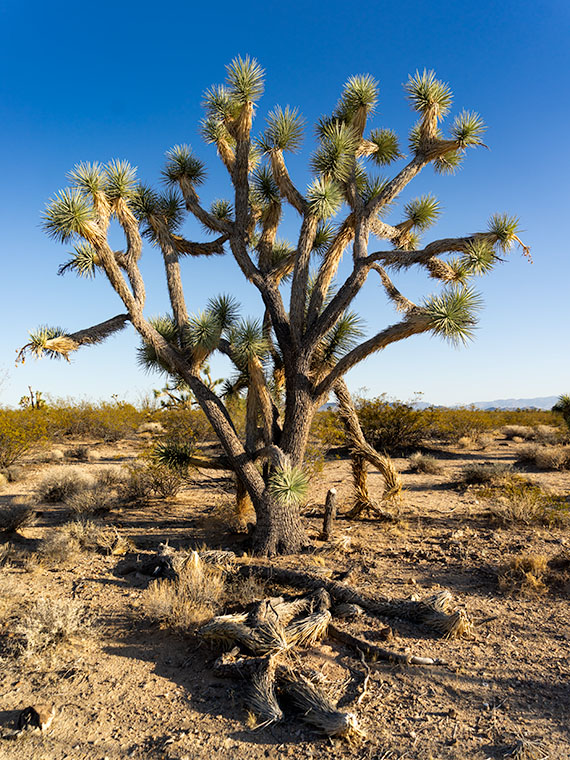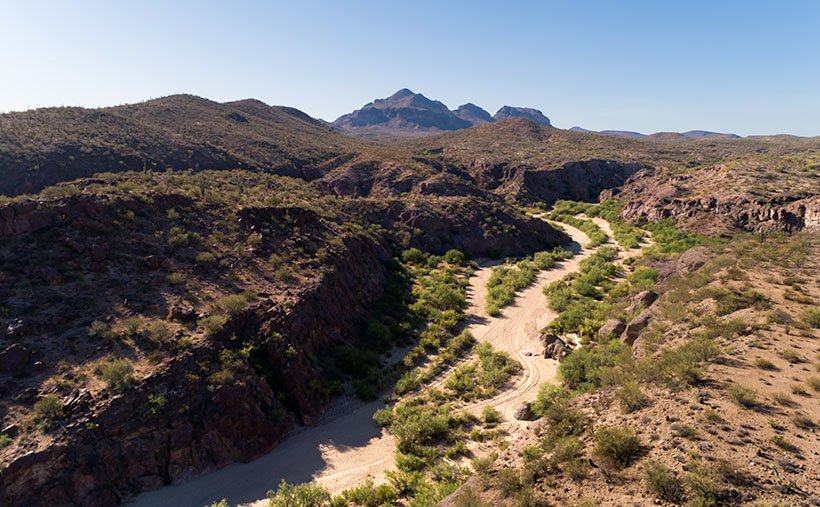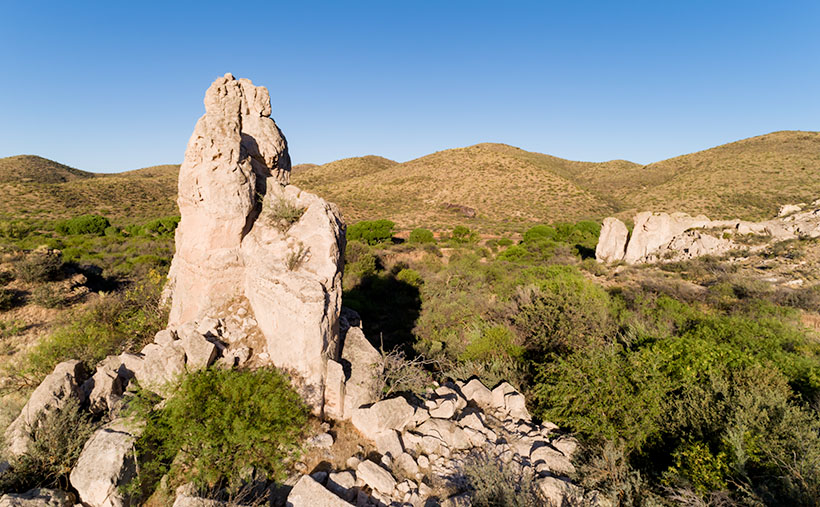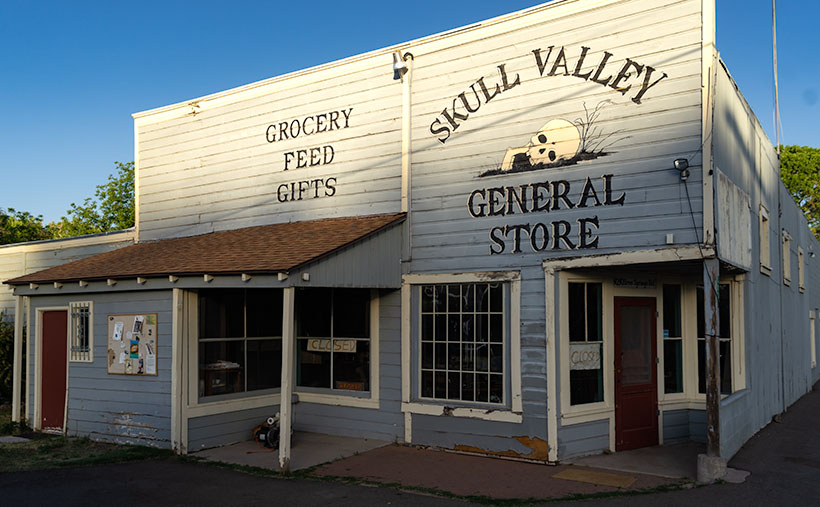There is the phrase Grand Canyon State on every Arizona license plate—it’s our state slogan. I find it ironic that the biggest thing we brag about is something that eroded millions of years ago. Sure, we have the World’s biggest hole in the ground, but there are many other sights in Arizona that we can be proud of.
I think that the slogan can have two meanings. First is obvious; the Grand Canyon State—we’re the state where the Grand Canyon is. The other interpretation that I see is; the grand canyon state—meaning that we’re a big state with lots of canyons within it. It’s true. We have pretty canyons all over the state. There’s the big ditch, of course, but there is also Canyon de Chelly, Salt River Canyon, Oak Creek, Madera Canyon, Sabino Canyon, and too many others to list here. Actually, I looked for a comprehensive list like the one I found for our mountains, but it alluded me.
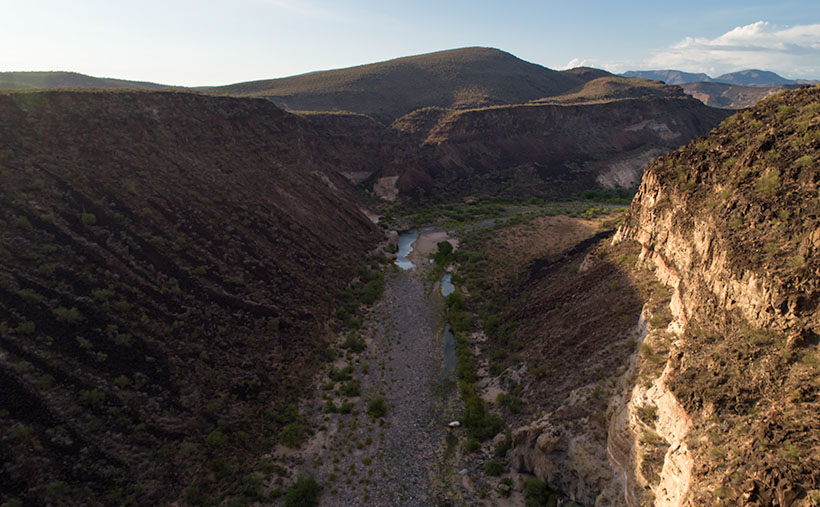
Our stop this week along Highway US 93 is Burro Creek Canyon. The view of the canyon is spectacular, but it’s hard to see from the road. The bridges over the chasm are short, and the walls are high, so unless they’re in a semi-truck, most people don’t get to see over them—a gripe I share with the new bridge at Hoover Dam. The highway department didn’t build a scenic overlook, and you’re not supposed to walk across the bridge. You can take in the vista in my shot by parking in an unmarked lot accessible from the northbound lanes. Then, a short hike up a trail will get you to the south wall.
Canyons have always been important to Arizona travelers because you usually find water in them. After all, that’s how they were carved. Burro Creek is one of those exotic desert waterways that always has water (in normal years). As you can see in my shot, a couple of surface pools reflect the blue sky even during our extended drought. That makes the creek a reliable water source for wildlife, cattle, and even the wild burros that are pervasive in western Arizona.
I’ve considered adding canyons to my projects list. There’s enough subject matter to fill another of my book fantasies. However, my to-do list already has mountains, old towns, historic hotels, deserts, farms, Colorado Plateau, and the Grand Canyon on it. How do I prioritize them? Where would I ever find the time to photograph them all? I’d have to clone myself because my time is getting short, and the list keeps growing.
You can see a larger version of Burro Creek Canyon on its Web Page by clicking here. Next week, I’ll turn the camera around for a nice look in the other direction.
Until next time — jw

